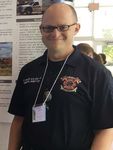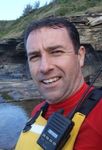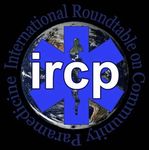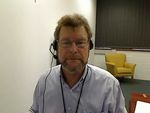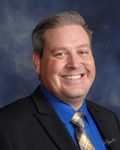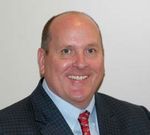2018 PROGRAMME August 6-7, 2018 Hilton Auckland Aquamarine 3, Level 1 Conference Floor - 15th MEETING
←
→
Page content transcription
If your browser does not render page correctly, please read the page content below
MONDAY August 6 2018
08.00 Arrival and Registration
Hilton Auckland
MEETING OPENING (Aquamarine 3)
09.00 Welcome to New Zealand
Mike Grant
Chief Executive, Wellington Free Ambulance
09.10 IRCP Welcome
David Waters, Chief Executive, CAA [AUS]
Gary Wingrove, Mayo Clinic [USA]
Passing of the IRCP Gavel
Gary Wingrove, Chair, IRCP [USA]
Robert Ahlers, The Paramedic Foundation [USA]
David Waters, Chief Executive, CAA [AUS]
Proposal by The Paramedic Chiefs of Canada to host IRCP 2019
Gerry Schreimer, PCC [CAN]
IMPORTANT NOTE: The IRCP uses a standardized nomenclature of professional titles and agency names in order
to reduce audience confusion. The actual local titles of the presenters, their program names and their agency
may be different than listed in this programme.
SESSION A PLANNING (Aquamarine 3)
09.20 15.A.1 Easing the financial burden as healthcare moves from inpatient to outpatient care
Mary Ahlers, RN CP-C: Founder
Paramedic Health Solutions [USA]
Josephine Kershaw, PhD FACHE Fulbright Scholar: Professor and Associate Dean
Christ College of Nursing and Health Sciences [USA]
10.00 15.A.2 Factors impacting the decision-making processes of qualified paramedics moving to a specialist
role in community paramedicine
David N Long, PhD ACP: Lecturer
Queensland University of Technology [AUS]
10.30 Refreshment Break (Conference Floor – Outside the Meeting Room)
11.00 15.A.3 Why certification is important
John Clark, MBA ACP: Chief Operating Officer
International Board of Specialty Certification [USA]
11.30 15.A.4 Is professionalisation a driver of community paramedicine? Looking at paramedicine through the
lens of professional identity
Buck Reed, MIHM ACP PhD (candidate): Associate Lecturer in Paramedicine
Western Sydney University [AUS]12.00 Lunch (Conference Floor)
SESSION A PLANNING (Aquamarine 3)
13.00 15.A.5 Digital area staff sheets - supporting dispatchers and paramedics alike (Control Resource
Electronic Worksheet Project)
Cassandra McKenzie, ACP CP RN: Director, Strategy and Innovation
NSW Ambulance [AUS]
SESSION B IMPLEMENTATION (Aquamarine 3)
13.30 15.B.1 Strategy to evolve the international certified community paramedic exam
John Clark, MBA ACP: Chief Operating Officer
International Board of Specialty Certification [USA]
14.00 15.B.2 Pre-hospital intravenous antibiotic administration: An Ambulance Victoria randomised controlled
trial
Daniel Cudini, MPA PhD (Candidate) ACP: Clinical Support Officer
Ambulance Victoria [AUS]
14.30 15.B.3 Prehospital management of STEMI in extreme conditions
Steven Faddy, MS: Manager, Clinical Project Evaluation
NSW Ambulance, [AUS]
15.10 Refreshment Break (Conference Floor)
15.45 15.B.4 Integrating social work into community paramedicine
Malachi Winters, ACP: Program Manager
Wichita/Sedgwick County EMS System [USA]
16.15 Q & A With Speakers and Group Reflection on the Day
17.00 – 18.00 OPENING RECEPTION – CONFERENCE FLOORTUESDAY August 7 2018
08.00 Arrival and Registration
SESSION B IMPLEMENTATION (Aquamarine 3)
09.00 15.B.5 Diagnostic imaging at the point-of-care: A possible role for community paramedics?
Victoria Young, Victoria Young, PhD, P.Eng.: Post-Doctoral Fellow
University Health Network – Toronto Rehabilitation Institute [CAN]
09.30 15.B.6 Multidisciplinary team structure of a tribal community paramedic program allows for rapid
coordinated approach to urgent public health concern
Chelsea White, MD ACP: Director
University of New Mexico Center for Rural and Tribal Paramedic Services [USA]
SESSION C EVALUATION (Aquamarine 3)
10.00 15.C.1 Developing a global paramedic program accreditation framework for the higher education
sector
Peter O’Meara, PhD ACP: Lead
Global Paramedicine Higher Education Council [USA]
Mary Ahlers, RN CP-C: Founder
Paramedic Health Solutions [USA]
10.30 Refreshment Break (Conference Floor)
SESSION C EVALUATION (Aquamarine 3)
11.00 15.C.2 Environmental methods of simulation in paramedic education
Duncan McConnell, MBA ACP: Senior Lecturer and Foundational Program Director – School of
Medicine, Griffith University [AUS]
11.30 15.C.3 GippSIM A mobile simulation initiative
Ross Salathiel, ACP: Clinical Support Officer
Ambulance Victoria [AUS]
12.00 Lunch (Conference Floor)
SESSION C EVALUATION (Aquamarine 3)
12.30 15.C.4 PAC4RAC - Providing appropriate care for residents in aged care
Jonathan Tunhavasana, MS ACP: Project Lead, Business Innovation & Planning
NSW Ambulance [AUS]13.00 15.C.5 Updates on two tribal community paramedic programs in New Mexico, USA
Chelsea White, MD ACP: Director
University of New Mexico Center for Rural and Tribal Paramedic Services [USA]
13.30 15.C.6 The creation of a community paramedicine standard in Canada
Pierre Poirier, MBA ACP: Executive Director
Paramedic Association of Canada [CAN]
14.00 15.C.7 Salutogenesis: A potential underpinning theory for Community Paramedicine
Krista Cockrell, MHS ACP: Sessional Lecturer
Western Sydney University [AUS]
Buck Reed, MIHM ACP PhD (candidate): Associate Lecturer in Paramedicine
Western Sydney University [AUS]
15.00 Refreshment Break (Conference Floor)
15.30 15.C.8 Community Paramedicine in Frontenac County (Ontario, Canada): From primary care to public
health
Jason Kervin, BClinPrac, ACP: Community Paramedicine/Education Coordinator
Frontenac Paramedic Services [CAN]
16.00 Closing RemarksPresentation Abstracts
15.A.1 Easing the financial burden as healthcare moves from inpatient to
outpatient care
Mary Ahlers, RN CP-C: Founder
Paramedic Health Solutions [USA]
Josephine Kershaw, PhD FACHE Fulbright Scholar: Professor and
Associate Dean
Christ College of Nursing and Health Sciences [USA]
Innovative partnerships with Community Paramedics, Community
Paramedicine professional organizations, hospital networks, and health
administration programs can transform paramedic careers with expanded
roles in today’s health systems as delivery settings shift from inpatient to
outpatient care. Integrating community networks, resources, technology
and education would open the untapped potential for Community
Paramedics to fill the inpatient to outpatient transition gaps.
15.A.2 Factors impacting the decision-making processes of Qualified
Paramedics moving to a specialist role in Community Paramedicine
David N Long, PhD ACP: Lecturer
Queensland University of Technology [AUS]
Community paramedicine continues to evolve as a stream of paramedic
specialisation. However, little is known about the transition from a
“traditional” role to that of an Extended Care Paramedic (ECP) or
Community Paramedic (CP). Moreover, few studies have explicitly examined
the rationale for the articulation of an experienced practitioner to an
advanced practice role. This research illuminated the events or
circumstances participants identified as necessary prior to the active
engagement in the transition process. Methods: ECPs (n=25) from two
Australian jurisdictions and CPs (n=11) from a Canadian provincial health
service, participated in a qualitative study exploring their experiences of
transition. The data from the three study sites was pooled and interpreted
using constructivist grounded theory methodology. Results: Qualified
Paramedics entered a junctional point in their careers in which the reasons
for pursuing a career in community paramedicine were rationalised. The
decision-making process involved satisfying two career “wants”: seeking
new career options and improving patient outcomes. Subsequently, the
paramedic’s perception of the community paramedicine role determined
whether the paramedic entered the active phases of transition. Conclusion:
This study is the first of its kind to qualitatively examine the transition from
one clinical specialist stream to another. The findings of this study have the
potential to inform the selection criteria of prospective ECP/CP candidates
and be utilised as a workforce recruitment tool for community
paramedicine programs.15.A.3 Why certification is important
John Clark, MBA ACP: Chief Operating Officer
International Board of Specialty Certification [USA]
Specialty Certification is a voluntary credentialing process designed to
validate essential knowledge and judgment required for safe and
competent practice. It is not a substitute for entry-level certification or
licensure, but a tool to validate additional knowledge and dovetail with
existing systems. Board certifications demonstrate expertise in a particular
specialty area of practice. In today’s complex healthcare system, providers
are engaged in specialized practice areas that require substantial additional
knowledge and experience beyond what can be expected from an entry-
level practitioner. The historical evolution of paramedicine has created a
specialized practice that is not well defined yet is demanded by advances in
the science of medicine. Specialty examinations are developed by SMEs in
collaboration with board representatives that includes a job analysis,
workforce survey, blueprint development, item creation, exam design and
finally delivery. Once specialty certification is acquired, expectations for
continued competency are in place. This presentation will explore how
specialty certifications provide for effective, safe and standardized specialty
expertise with valid examination, improved patient outcomes and creates a
universally recognized means for demonstrating that paramedics holding
specialty certification are qualified to work in the domain of paramedicine
beyond that of an entry-level paramedic.
15.A.4 Is professionalisation a driver of community paramedicine? Looking at
paramedicine through the lens of professional identity.
Buck Reed, MIHM ACP PhD (candidate): Associate Lecturer in
Paramedicine
Western Sydney University [AUS]
As paramedicine increasingly professionalises there are implications for
professional identity. Many frameworks exist for defining a profession, often
based on characteristics of an occupational group. However, deeper than a
collection of characteristics is how members of that profession self-
conceptualise. Traditionally professional identity has been tied to the means of
production. This has produced a unique paramedic worldview including cultural
norms about what was and was not “ambulance work.” As the professionalism
develops, professional identity has been shifting from the means of production
to a more practitioner-centred focus. As Paramedicine develops, it is critical to
establish a deep understanding of the essence of paramedic practice. This is
known as paramedicine’s “Metaparadigm”. Through understanding the
paramedicine metaparadigm, we separate the practitioner from the tasks they
undertake. It is the metaparadigm that fundamentally separates community
paramedicine from community nursing. As professionalism increases the focus
to the individual practitioner, it deconstructs boundaries created through other
structures such as service delivery systems. As Paramedicine develops, it will
need to form underpinning theories that explain its practice. These are
intrinsically linked to theories of identity. While paramedics have traditionally
viewed their identity through their occupation or function, identity and being as
a paramedic is a much deeper concept. As we understand identity, exploring
other roles and paradigms of practice such as community paramedicine likely
become more feasible.15.A.5 Digital area staff sheets - supporting dispatchers and paramedics alike
(Control Resource Electronic Worksheet Project)
Cassandra McKenzie, ACP CP RN: Director, Strategy and Innovation
NSW Ambulance [AUS]
Data related to time and attendance for operational paramedic shifts is
recorded by Control Centre Officers (dispatchers) in each of the four NSW
Ambulance Control Centres. In practice, this process involves the
dispatcher accessing a paper-based area staff sheet to verify the names,
shift start and finish times and clinical skill level of all of the paramedics
rostered to work in the relevant dispatch jurisdiction. For dispatchers, the
process of managing the time and attendance of paramedics throughout
their shift has become unsustainably complex and is currently devoid of a
system or process to manage the complexity of this task. The area staff
sheet in its current form is onerous for the dispatcher and has associated
operational risk as a result of relying on human process for roster
reconciliation, where this could foreseeably be achieved through
investment in systems integration.
15.B.1 Strategy to evolve the international certified community
paramedic exam
John Clark, MBA ACP: Chief Operating Officer
International Board of Specialty Certification [USA]
This session will outline the planned process for updating the CP-C exam
in five-year cycles.
15.B.2 Pre-hospital intravenous antibiotic administration: An Ambulance
Victoria randomised controlled trial
Daniel Cudini, ACP: Clinical Support Officer
Ambulance Victoria [AUS]
Sepsis is one of the most frequent causes of emergency department
attendance worldwide, with an annual incidence in adults of up to 300
cases per 100,000 population. It is recognised by the WHO as a global
health priority and has a reported in-hospital mortality as high as 50%.
This greatly exceeds that seen in myocardial infarction, stroke, or
traumatic injury. Paramedics may play a key role in the management of
sepsis via reduction in time to antibiotic treatment through pre-hospital
administration of antibiotics. Ambulance Victoria aims to conduct a phase
2, prospective, randomised controlled trial (RCT) of paramedic-
administered intravenous ceftriaxone in the pre-hospital setting in
patients with severe community-acquired sepsis (SCAS). Inclusion criteria
include adults (> 18 years) with history of infection and at least one ‘Red
Flag’ sepsis criteria. Blood cultures will be drawn prior to antibiotic
administration. An evidence-based change in the pre-hospital treatment
to enable pre-hospital antibiotic administration could result in a
significant reduction in mortality. This phase 2 RCT highlights the integral
role that ambulance services play in extending point of care medicine
from the in hospital to the pre-hospital setting and influencing general
medical care on a national/international scale. Findings from this study
will potentially provide a robust rationale to undertake a larger
interventional study exploring mortality and morbidity outcomes.15.B.3 Prehospital management of STEMI in extreme conditions
Steven Faddy, MS: Manager, Clinical Project Evaluation
NSW Ambulance, [AUS]
Australia is being subjected to more extreme weather conditions. We
present a case where a patient was treated in such conditions.
15.B.4 Integrating social work into community paramedicine
Malachi Winters, ACP: Program Manager
Wichita/Sedgwick County EMS System [USA]
Community Paramedics have been engaging with non-medical client
needs since the inception of their role in EMS systems, however many of
the clients with complex biopsychosocial issues can be prohibitively time
and labor intensive. Social workers have extensive education and training
on dealing with these issues but have not traditionally been an integrated
part of the prehospital medicine environment. Sedgwick County EMS has
built a community paramedic program that formally incorporates social
workers into the community paramedic team to support the community
paramedic in treating complex psychosocial issues with our client base.
We have found that while community paramedics continue to address
non-medical issues with most clients, the ability to refer or consult with a
social worker at any time has streamlined the work being done and
allowed the community paramedic to see more clients and be more
effective with clients that present with complex needs. Other systems are
adopting similar models with similar successes and we have been holding
quarterly conference calls so we can all learn from each other’s successes
and challenges. In conclusion, a multi-disciplinary team with social
workers embedded in the community paramedic program gives the
community paramedic additional resources and support, as well as
contributing to quality and efficiency.
15.B.5 Diagnostic imaging at the point-of-care: A possible role for community
paramedics? [20]
Victoria Young, Victoria Young, PhD, P.Eng.: Post-Doctoral Fellow
University Health Network – Toronto Rehabilitation Institute [CAN]
In Ontario, as in other parts of Canada, marginalized and vulnerable
populations, such as the elderly and individuals with mental health or
addiction concerns, have been identified as having the greatest difficulty
accessing quality, comprehensive medical care. This research explores
available evidence surrounding the need for provision of radiography
services pre-hospital, in addition to implementation considerations (e.g.,
barriers/facilitators, feasibility, options) for paramedics to be involved in
radiography service provision.15.B.6 Multidisciplinary Team Structure of a Tribal Community Paramedic
Program Allows for Rapid Coordinated Approach to Urgent Public Health
Concern
Chelsea White, MD ACP: Director
University of New Mexico Center for Rural and Tribal Paramedic
Services [USA]
The Pueblo of Laguna Community Care Team (CCT) is a multidisciplinary team
consisting of Laguna Fire Rescue Community Paramedics, Laguna Community
Health Representatives (LCHRs), and Laguna Public Health Nurses (LPHNs.) This
team is primarily tasked with longitudinal management of patients with chronic
health issues, the collaborative nature of the team proved beneficial when a
patient was potentially exposed to rabies. On May 12, 2018, Laguna Fire Rescue
Paramedics responded to a patient that may have been bitten by a bat. Contact
with bats confers a significant risk of rabies infection. However, this patient
refused ambulance transport to a hospital for evaluation. This was quickly
noticed by the Laguna Medical Director, who directed paramedics to return and
convince the patient of the need for urgent medical treatment. Coordination of
this patient’s care over several return visits involved the Laguna Community
Paramedics (CP), the LCHRs, the LPHNs, the Medical Director, the New Mexico
Department of Health, and the Emergency Department of the University of New
Mexico. The flexibility of the team played a major role in getting the patient to
treatment over the following weeks.
15.C.1 Developing a global paramedic program accreditation framework for
the higher education sector
Peter O’Meara, PhD ACP: Lead
Global Paramedicine Higher Education Council [USA]
Mary Ahlers, RN CP-C: Founder
Paramedic Health Solutions [USA]
Paramedicine is transitioning from its beginnings in military and
emergency service settings to a fully-fledged health profession, where
paramedics are capable of practicing as autonomous health
professionals. Paramedic education is in the process of migrating from
vocational training systems to the higher education sector, bringing with
it the need for transparent and consistent program standards at both
entry to practice and specialist levels. The Global Paramedic Higher
Education Council, an autonomous accrediting agency, plans to provide
an exemplar paramedicine program accreditation service that will help
higher education around the world achieve consistent educational
standards and competency outcomes. It will facilitate employment
mobility and improve the health outcomes through the development of
global education standards and accreditation processes adapted from the
existing WHO accreditation framework for the accreditation of health
professional education. The anticipated outcomes will be global
paramedic education standards and an accreditation framework, a
database of accredited education programs at both baccalaureate and
postgraduate levels and the basis for a global network of paramedicine
accreditation bodies.15.C.2 Environmental Methods of Simulation in Paramedic Education
Duncan McConnell, MBA ACP: Senior Lecturer and Foundational
Program Director – School of Medicine,
Griffith University [AUS]
Simulation has become a major learning paradigm across industries
around the world. Paramedicine is no exception to this, with it now
playing a major part in the delivery of both the education of our future
paramedics but also within skill maintenance and development of
qualified paramedics as well. Simulation enables learners to have an
authentic learning experience, which ultimately enables them to learn,
apply, reflect and improve, before they ever touch a real patient. Adding
environmental factors to simulations provides an entirely different
simulation experience to all levels of learners. Implementation of
environmental factors into your simulations can be achieved in multiple
low-cost solutions, many of which you may already have at home or
within your workplace. Using a Bluetooth speaker with a child’s cry on
loop, introducing a real animal into the scenario or even using a broken
or non-functioning manikin as your extrication manikin in a difficult
location, as just some of the low cost, high impact training solutions you
can achieve via the addition of environmental factors to your simulations.
How else can you train for the unexpected, if the unexpected is not part
of your training.
15.C.3 GippSIM A mobile simulation initiative
Ross Salathiel, ACP: Clinical Support Officer
Ambulance Victoria [AUS]
Regional and remote paramedics are infrequently required to perform high-
risk interventions. When they are called to do so, they may lack confidence
or competence. Strategies to enhance confidence in performing high-risk,
low frequency skills and improve patient care are a priority. Such strategies
should align with the credentialing requirements for prehospital clinicians
preparing for the impending registration of paramedics in Australia.
Ambulance Victoria (Gippsland Region) has commenced a pilot project
utilising a mobile simulation vehicle, known as “GippSIM”. GippSIM is an
innovative, accessible and familiar platform designed to increase the
exposure of paramedics to infrequently performed skills and procedures.
GippSIM utilises a standard ambulance coupled with state-of-the-art
simulation equipment, designed to bring high-fidelity clinical simulation to
the remote and regional area clinician.
The GippSIM project will focus on increasing exposure to a number of key
clinical interventions identified by Ambulance Victoria as priorities. These
include thrombolysis for myocardial infarction, identification of ischaemic
stroke to determine eligibility for thrombolysis and/or endovascular clot
retrieval, tension pneumothorax decompression, drug assisted intubation
and cardiac arrest management.
The GippSIM project commenced in November 2017. This presentation will
detail the evolution of the project, field implementation, and will also
discuss interim survey results from the first 7-9 months of operation.15.C.4 PAC4RAC - Providing Appropriate Care for Residents in Aged Care
Jonathan Tunhavasana, MS ACP: Project Lead, Business Innovation &
Planning
NSW Ambulance [AUS]
The PAC4RAC project vision was to ensure Twilight Aged Care (TAC)
residents received the right care, at the right time, from the right people,
through systematic and integrated processes that provide a positive
experience for the residents and staff involved, reducing the emotional,
physical and financial costs to patients and the broader health system.
Applying the NSW Health Clinical Redesign Methodology provided robust
project governance and innovative solutions which, since implementation,
has resulted in a 36% reduction in 2017 (post the implementation in 2016)
of calls from TAC homes to NSW Ambulance. The PAC4RAC project has
demonstrated that collaboration and integrated care processes leads to
improved outcomes for aged care residents through hospital avoidance,
also reducing demand on NSW Ambulance and NSLHD emergency resulting
in improved efficiencies across the broader health system.
15.C.5 Updates on two Tribal Community Paramedic Programs in New Mexico,
USA
Chelsea White, MD ACP: Director
University of New Mexico Center for Rural and Tribal Paramedic
Services [USA]
Two Tribal Community EMS programs in New Mexico, USA, both described
in previous meetings of the International Roundtable of Community
Paramedicine, continue to flourish. In the Pueblo of Laguna, the Laguna
Community Care Team is a collaborative effort between LFR, the Laguna
Community Health Representatives (LCHRs), and the Laguna Public Health
Nurses (PHNs) to address unmet and under met medical needs in the
community that are beyond the scope of practice of the LCHRs and PHNs.
Protocols and skills are added as new needs are identified, allowing the
program to adapt quickly to successfully serve the community. Wound care
remains the main aim of this program, and the team is having success with
many difficult and debilitating wounds. On the Ramah Navajo Reservation,
the primary care paramedics of Pine Hill EMS provide minor
emergency/urgent care in their station when their local clinic is closed. The
paramedics have additional protocols and skills and have access to a
consulting EMS physician by phone to discuss more complicated cases. This
program continues to provide minor treatment and reassurance to patients
and has reduced ambulance and private vehicle transports to the nearest
emergency room, which is 64 km away on narrow, winding roads.
CONCLUSION: these two unique programs offer different creative
approaches to specific medical needs in their respective isolated
communities. Other similar communities may have success with one or both
of these CP models.15.C.6 The creation of a Community Paramedicine Standard in Canada
Pierre Poirier, MBA ACP: Executive Director
Paramedic Association of Canada [CAN]
Community Paramedic programs have been in existence for over 15 years.
The programs have been organic. They have been developed through
community need and the creative spirit of enlightened individuals
recognizing opportunity and service to community. For several years,
paramedics have known that we need some coherent structure to advance
the fantastic programs within our provincial government frameworks. The
Canadian Standards Association (CSA) develops standards as their raison
d'etre. A perfect match between the CSA and the Paramedic Association of
Canada.
15.C.7 Salutogenesis: A potential underpinning theory for Community
Paramedicine
Krista Cockrell, MHS ACP: Professor
Western Sydney University [AUS]
Buck Reed, MIHM ACP PhD (candidate): Associate Lecturer in
Paramedicine
Western Sydney University [AUS]
Meeting healthcare needs in rural communities remains a challenge. Many
paramedics recognise primary healthcare elements of their practice,
however, barriers exist to implementing primary healthcare-based
strategies. This study explores paramedics’ perceptions of augmenting their
practice, recognising their unique access to patients at home, with the
introduction of a tool to measure sense of coherence, general resistance
resources, and social determinants of health (SDH) to help guide them in
such cases. The aim of this assessment is to assist building patient resilience
to improve outcomes in current and future health events using a
salutogenic approach. Methods: A questionnaire was administered to 146
rural paramedics, exploring their perceived knowledge of health disparities
in their communities, the impact of SDH, and their roles as frontline care
providers. This aimed to establish the feasibility of utilising a salutogenic
approach within paramedics’ current scope of practice. Results: Most
participants recognised a need to move toward salutogenic approaches to
healthcare. Results found that 73.1% of participants would be highly likely
to refer patients to services if they recognised a need and were aware of a
service that may be able to assist. Results highlighted paramedic
perceptions that their unique access to patients provided opportunities for
more holistic assessments and improved referral pathways. Some
participants expressed concerns around creating additional stress on
already overburdened systems. Conclusion: This project sets the platform
for the adoption of a salutogenic approach to paramedicine and explores
new avenues for paramedic practice in line with the evolution of the
profession.15.C.8 Community Paramedicine in Frontenac County (Ontario, Canada): From
Primary Care to Public Health
Jason Kervin, BClinPrac, ACP: Community Paramedicine/Education
Coordinator
Frontenac Paramedic Services [CAN]
This session will describe the Frontenac Paramedic Services involvement
with the CP@clinic program which targets low income seniors for focused
health monitoring while providing feedback to their primary care provider.
In addition, we will present a potentially novel role for community
paramedics in the medical staffing of an overdose prevention site.2018 PROGRAMME 15th MEETING Hilton Auckland
You can also read



